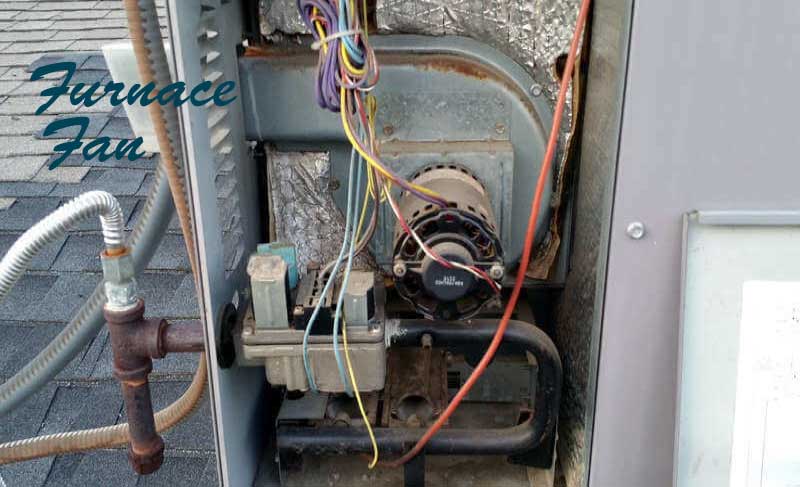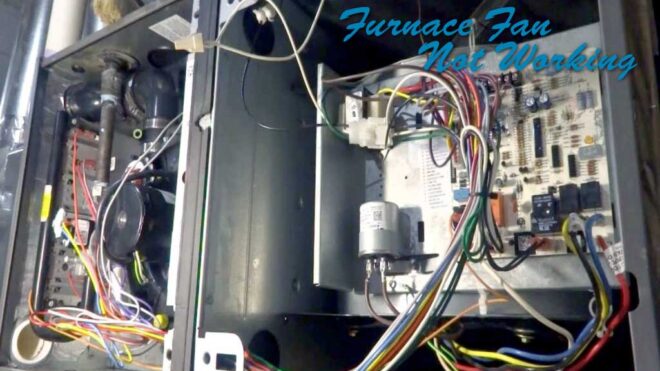Like air conditioning systems, the furnace is one of the most forgotten pieces of equipment at home一that is, until it stops working properly or stops working altogether. It then becomes a must-have for safety and comfort at home.
Everyone wants quality airflow that is evenly and consistently distributed at home. Unfortunately, much like air conditioning units again, your furnace will inevitably run into problems and will need maintenance and repair. Thus, keep the name and the contact number of your HVAC contractor or technician. Before you call them, there are troubleshooting tips that you may want to try.
Fortunately for homeowners, not all air conditioning and furnace problems are a major cause of concern. Sometimes a heat system issue can be fixed with the help of a user manual and some DIY initiative. However, and this should not be taken lightly, always err on the side of caution. If, for whatever reasons, you think your safety is at risk or you’re not knowledgeable enough about furnaces, call your trusted furnace repair technician ASAP. These technicians have the tools and the experience and expertise to address any furnace issue.
Here’s a list of things you want to check before calling your HVAC technician.
Check the switches
Step 1. Starts off with the easiest: power supply. Whether it’s a furnace service problem or an air conditioner without cold air, check for power supply.
A lot of homeowners forget about this self-explanatory step. Just because the rest of your house has power going on doesn’t mean your furnace has power too.
Furnace switch
A furnace switch may be located on the unit itself or on a nearby wall. Because it looks like a regular light switch, it could be turned off by accident. That may be why there’s no heat from your furnace. Simply put the switch in the On position and you’re good to go.
Furnace circuit breaker switch
Locate the furnace circuit breaker on your breaker panel and make sure it’s in the On position. Your furnace will not function if the circuit breaker is off or when the furnace circuit breaker trips.
A circuit breaker is a safety feature. It’s there to shut off electric current when things go bad with your furnace. If your circuit breaker trips a number of times, that’s a sign something more is going on and you need to call in the professionals to fix the problem.
Limit control switch
“Furnace blower fan limit switch” is quite a mouthful for one switch, but basically, it tells you what the switch is for. Limit switches are safety components in furnaces.
A limit control switch controls the furnace blower fan and turns it on or off depending on the temperature of the furnace. When the temperature is too high, this safety switch will shut off the furnace to avoid overheating.
Turn on the switch if you see it in the Off position. If goes back off again, you’re in for more repair that you can probably handle so call your HVAC technician right away.
Furnace door
Take a look at your furnace door. For safety reasons, a modern furnace will not work if the furnace door is not completely closed. Some units have a switch that the door presses when it’s properly shut.
Simply close the furnace door properly and observe your unit. Some homeowners have noticed the door will slightly open again. If that happens to you too, that’s a sign you need professional repair.
Thermostat
The thermostat determines how much heat is needed by the furnace to function properly. It signals to the furnace to start the heating cycle. It’s a rather simple component but is also one of the most important in a heating system.
The thermostat prompts the furnace to produce heat, which becomes the warm air that circulates around the house. Without the blower motor, air cannot push through the vents. When there is enough warm air in the house or the thermostat reaches its preset settings, the thermostat again sends a signal to the furnace.
The thermostat is an easy furnace part to troubleshoot. It basically involves its setting and its batteries.
Setting
Make sure the thermostat is set on “Heat” and it’s at least 5 degrees above room temperature.
Batteries
If your furnace thermostat runs on batteries, see if it doesn’t flash a low-battery indicator. Batteries on a thermostat don’t last forever. Ideally, a thermostat battery should be replaced every year.
Air Filter
A clogged filter will result in restricted air flow, which will drop the efficiency of the furnace. Clogging happens when the filter accumulates dust and debris. This accumulation will block warm air, reducing the heat in your home.
Cleaning air filters is an easy HVAC maintenance problem you can fix at home. Simply locate your filter and clean it. If the filter has too much dust and debris, it may be time to replace it.
Removing the debris caught in the air filter should be done regularly to avoid clogging. When the air filter is clogged, the blower works harder to overcome the clogging. One small problem will then result in a bigger problem.
Too much strain on the blower motor will cause overheating and bigger electric consumption. Worse, it will shorten the lifespan of the component.

Furnace blower motor and blower fan
The terms blower and fan are often used interchangeably. Basically, both furnace blower and blower fan are used to move air in the HVAC system with the help of the run capacitor. The run capacitor gives the blower and the fan a steady stream of electric energy to keep them running. When the furnace blower motor and the blower fan need repair, you have to call the experts. However, it’s good to know the signs that indicate whether or not a blower motor is faulty or a blower fan needs special attention.
The blower motor and blower fan are important. They are there to overcome the flow resistance of components like pipes and ducts. When either one or both blower motor and blower fan get clogged, this will result in poor air quality and insufficient air flow. How do you know if one of them is the problem?
One, you notice a burning smell. This indicates the fan belt or the fan motor is overheated. Turn off the unit immediately to avoid further damages, and then call your technician. Two, you hear strange noises. Blower fans and blower motors make noise, but when they sound out of the ordinary, you need to call for repair or maintenance right away. When there is insufficient air flow, either of the two components may be obstructed and you finally have to call for help.
Flue Vents or Flue Pipes
Next on the list are flue vents. The flue vent is a pipe or a duct that used to release combustion gases or exhaust. These gases are the by-product of the heating process.
You may have to make a service call to your HVAC contractor if your flue pipe is obstructed, broken, or leaking, but there are troubleshooting tips that you can first do on your own.
Check if there is water leaking from the flue pipe. While you’re at it, check if there is rust in the pipe and if there is soot in your furnace. Those are signs that something may be wrong with the pipe. Soot may also indicate that your heat exchanger has cracked or malfunctioning.
The flue pipe is responsible for removing hazardous gases, like carbon monoxide, from your heating system and releasing them into the atmosphere. When the flue pipe is the issue, you have to call your HVAC technician for immediate repair.
Gas Supply
Unlike heat pumps, your furnace probably uses gas to function. Hence, check if the gas valve is On. Without gas supply, the furnace won’t work at all. If you can smell gas in the air, probably due to a leaking gas pipe, get out of the house immediately and call your gas company.
Vents
Look around your home and see if anything is blocking the air vents. Sometimes big pieces of furniture obstruct the vents so that air can’t circulate properly. This is one simple thing that you should check before calling an HVAC technician for repair. The issue may be staring you in the face
Safety Reminders
Always keep safety the top priority. Make sure to turn off your furnace, air conditioner, or any electric device when troubleshooting to avoid safety hazards.
Refer to the user manual. OEMs expect an HVAC system or a part of it to eventually go bad. Almost all the important things you need to know about the motor, blower, capacitor, fan, furnace control board, heat pump, heat exchanger, and other components in your HVAC system are detailed in the user manual.
Without a user guide, go to the manufacturer’s website with your HVAC’s model number and see if you can find available references.
Signs you need HVAC techs pronto
A little homeowner knowledge helps every now and then, but if you’ve tried everything in this article and your furnace is still not working properly, don’t prolong your bad experience and suffer from cold air.
Bring in the professionals immediately when any of the following occurs:
- No heat nor warm air from the furnace – If after all the troubleshooting you did you’re still left with cold air, ask your trusted furnace expert to check your unit.
- Your unit is short-cycling- In our recent posts, we talked about short-cycling in air conditioning units. The same is true for furnaces: the unit powers on runs for a short time, then shuts off completely. When this happens, call a professional to solve the problem once and for all.
- You can smell gas – A leaking gas pipe is a disaster waiting to happen. Leave your house immediately the moment you smell gas and call your gas company before calling the HVAC experts.
Every furnace will show signs of wear and tear. Although it’s quite an accomplishment to fix things on your own, know when to call the pros. As they say, if symptoms persist, consult your technician. When comfort and safety are at stake, think fast and act fast.

